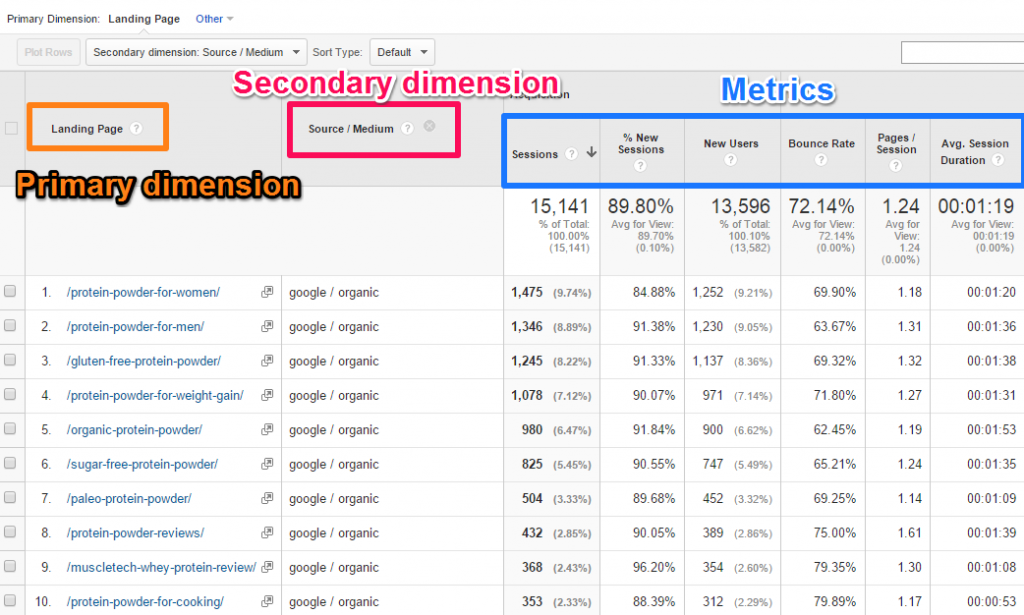Deep Dive into the 'Secondary Dimension' in Google Analytics: Everything You Should Recognize
Deep Dive into the 'Secondary Dimension' in Google Analytics: Everything You Should Recognize
Blog Article
Browsing the Depths of Secondary Measurement in Google Analytics: A Comprehensive Expedition on Its Capability
In the realm of electronic analytics, the complexities of information analysis usually hold the secret to unlocking valuable understandings. Within the large toolkit of Google Analytics lies a feature that functions as a hidden treasure for those that seek a deeper understanding of customer actions and internet site efficiency. Secondary dimensions, though seemingly simple initially glance, nurture a riches of untapped possible waiting to be used. As we start this journey to discover the nuanced functionality of additional dimensions, we will uncover how this attribute can brighten patterns, reveal relationships, and eventually lead the way for informed decision-making in the electronic landscape.
Understanding Additional Dimensions in Google Analytics

Understanding how additional dimensions job is vital for leveraging the full power of Google Analytics. By integrating main metrics with secondary measurements, you can get important understandings that drive informed decision-making and optimization techniques.
Leveraging Additional Dimensions for Information Evaluation
Structure upon the foundational understanding of how additional measurements boost information analysis in Google Analytics, the utilization of these additional layers of details ends up being critical in removing valuable insights for informed decision-making and optimization approaches. By leveraging secondary dimensions, analysts can dig much deeper into the performance metrics by including even more context to the primary dimensions, hence discovering surprise patterns and relationships that may not appear in the beginning glance. This deeper degree of evaluation allows organizations to better comprehend customer habits, recognize patterns, and determine locations for enhancement.
Additionally, second dimensions supply a more detailed view of the information, permitting division based on numerous parameters such as demographics, devices, web traffic sources, and more. This segmentation facilitates a more granular evaluation, enabling companies to customize their techniques and campaigns to certain target market sectors for boosted targeting and personalization. Essentially, the calculated use secondary measurements empowers organizations to make data-driven decisions that drive growth and success in the digital landscape.
Advanced Methods for Secondary Dimension Application
Checking out elaborate methods to harness the full potential of secondary measurements in Google Analytics elevates the depth and refinement of information analysis for critical decision-making. One advanced strategy for executing additional dimensions is the usage of custom-made dimensions. Additionally, integrating secondary measurements with innovative sections can supply also much more granular insights by applying several layers of division to the data.
Interpreting Insights With Second Dimensions

When translating understandings with second measurements, it is important to consider the context of the information and how different measurements interact with each various other. Understanding which certain traffic sources lead to greater conversion rates or identifying which gadgets users prefer for making purchases can give actionable insights for enhancing advertising and marketing projects and improving total site efficiency. By carefully examining the information with additional dimensions in mind, businesses can make informed decisions that drive significant results and improve their digital existence.
Optimizing Efficiency With Secondary Dimensions

One crucial method to optimize efficiency with secondary measurements is by segmenting data much more granularly. This permits you to separate details aspects that may be affecting your metrics and obtain a far better understanding of what drives success or failing in your digital campaigns. For instance, by integrating secondary dimensions such as 'gadget category' and 'touchdown web page,' you can determine which tool types are most efficient for certain landing pages, his explanation allowing you to customize your strategies appropriately.
Furthermore, utilizing secondary dimensions can aid you determine patterns, patterns, and connections that may not be evident when examining data with primary dimensions alone. This deeper degree of evaluation can lead to even more Going Here informed decision-making and inevitably enhance the general efficiency of your internet site or digital advertising projects.
Conclusion
To conclude, secondary measurements in Google Analytics play a vital role in boosting data analysis and providing much deeper understandings right into site performance. By using innovative strategies and translating the data efficiently, businesses can enhance their techniques and boost general efficiency. Comprehending the capability of secondary measurements is important for making informed decisions and driving success in the digital landscape.
By leveraging additional dimensions, analysts can dive deeper right into the performance metrics by including more context to the primary dimensions, thus revealing hidden patterns and connections that may not be noticeable at first glimpse. One advanced technique for carrying out secondary measurements is the usage of custom dimensions.Having actually mastered advanced techniques like custom-made dimensions and regex for secondary measurement implementation in Google Analytics, the next essential action is translating the useful understandings obtained my link with these innovative information segmentation techniques. Analyzing understandings with additional measurements involves evaluating the relationships in between the key and second dimensions chosen, discovering patterns, patterns, and correlations that may not be immediately obvious when looking at the information in its entirety.When interpreting understandings through second measurements, it is essential to consider the context of the data and exactly how various dimensions interact with each other.
Report this page